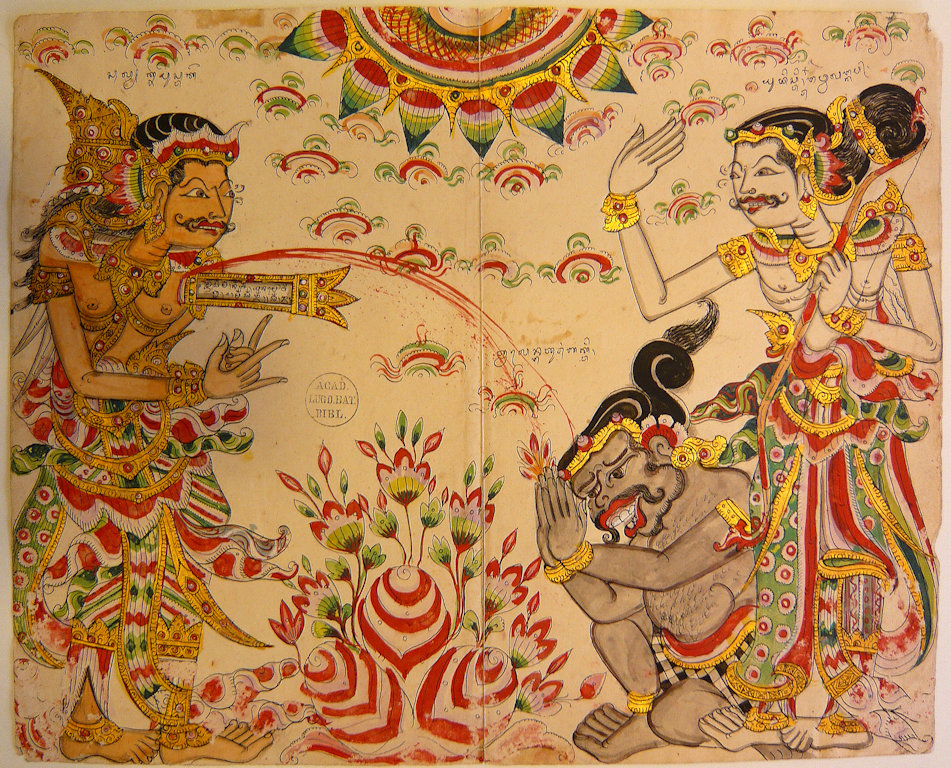KETOET GEDE, SINGARAJA, SALYA’S DEATH
LOr. 3390-304
Drawing on Dutch paper, watermark Concordia, countermark VdL., 33.9 x 42.1 cm
Salya, left, is hit by Yudistira’s book-arrow. Twalèn, right, pays homage to Salya. The stream of blood flowing from the chest of the wounded Salya just touches his head. Yudistira, standing on the far right, is holding a bow.
A text in Balinese script in ink at the top left says: ‘salya kna pustake”, Salya hit by book-arrow. On the arrow itself is written: “”om am mam, nam bam, ya namo wigna, mam am om; am, 3”. These words are holy syllables and formulas in Sanskrit which have to be uttered three times. The text, however, is partly corrupt. Instead of “ya namo wigna” it should read: namo – followed by the name of a god – ya, meaning “hail to …”., and “om awighnam astu”, “let there by no hindrance”. At the top on the right is written: ;;yudistira, ngawwa langkap”, Yudistira holds a bow. In the centre: “twalèn ngaturang bakti”, Twalèn pays homage.
This scene refers to an episode described in the Old Javanese Bharatayuddha (XL: 1-10), Salya has dressed himself in his best clothes and prepares for battle. The Korawa are on the losing side. Salya takes is rudrarosa (Rudra’s powerful) arrow,which is of extraordinary power. The gods decide that nobody except Yudistira shall fight Salya using this arrow. In XLI Kresna orders Yudistira to fight. He goes reluctantly. In XLII: 5 Kresna requests him to use the book-arrow. In XLII: 8 Salya is hit by it. Thunder, darkness while the sun is still shinging, and rain accompany his death. These signs indicate that a great man goes to heaven. This is also expressed in the drawing by the fact that Twalèn honours Salya with a sembah while the latter’s blood falls onto his fontanel.
